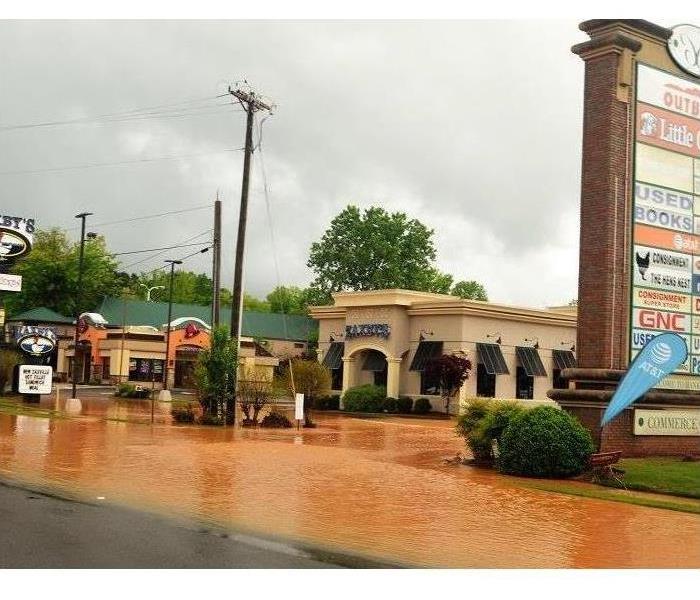How to Prepare Your Home for Storm Flooding
11/1/2023 (Permalink)
Storm flooding can cause extensive damage to your home and possessions, but with proper preparation and planning, you can significantly reduce the risk and mitigate potential losses. This blog post will guide you through the essential steps to prepare for storm flooding in your home, ensuring your safety and safeguarding your property.
Understand Your Risk: Before taking any action, it's crucial to understand the level of risk your area faces regarding storm flooding. Research local flood maps and consult your local authorities or emergency management agencies to determine the likelihood of flooding in your neighborhood. This information will help you make informed decisions about preparation.
Create an Emergency Kit: Prepare an emergency kit that includes essentials like non-perishable food, clean water, first aid supplies, flashlights, batteries, a portable radio, and important documents. Store this kit in a waterproof container that is easily accessible.
Develop a Family Emergency Plan: Discuss and establish a family emergency plan. Everyone in your household should know what to do in case of flooding, where to meet, and how to contact each other. Assign roles and responsibilities, and practice evacuation procedures.
Elevate Electrical Systems: Electrical systems, such as outlets, circuit breakers, and switches, should be raised above the expected flood level in your area. Consult with an electrician to make necessary adjustments and install Ground Fault Circuit Interrupters (GFCIs) to prevent electrical shocks.
Install Sump Pumps: A sump pump can help prevent water from accumulating in your basement. Ensure it is in good working condition and has a backup power source, such as a battery or generator, in case of power outages.
Waterproof Your Basement: Seal any cracks in your foundation and walls to prevent water from seeping in. Use waterproof paint or coatings on basement walls and floors. Consider elevating valuable items stored in your basement.
Elevate Appliances: If you live in a flood-prone area, elevate your appliances like the washer, dryer, and HVAC systems to prevent water damage. Secure them properly and consult with professionals if needed.
Install Flood Vents: Flood vents can allow water to flow in and out of your home, reducing structural damage. Consult a professional to determine the right type and placement of flood vents for your home.
Consider Flood Insurance: Regular homeowner's insurance typically does not cover flood damage. Investigate and purchase flood insurance through the National Flood Insurance Program (NFIP) or private insurers. Remember that there may be a waiting period before it takes effect.
Secure Outdoor Items: Before a storm, bring in or secure outdoor furniture, grills, and other items that could become projectiles during high winds. Clear gutters and downspouts to ensure proper drainage.
Create a Home Inventory: Compile a list of your possessions, including photos and descriptions. Store this inventory in a safe place, such as a waterproof container or cloud storage. It will be valuable for insurance claims.
Stay Informed: Keep yourself updated with the latest weather forecasts and warnings. Sign up for emergency alerts from local authorities and have a weather radio on hand to receive information during power outages.
Preparing for storm flooding in your home is a proactive step in safeguarding your family and property. By understanding your risk, planning ahead, and implementing preventive measures, you can significantly reduce the impact of flooding and make the recovery process smoother. Remember to stay vigilant and adapt your preparations as needed to address your specific circumstances and location.
SERVPRO Team Lutz is there to help you in your time of need. Call our office at 215.368.4110. There is someone waiting to help you 24/7.






 24/7 Emergency Service
24/7 Emergency Service